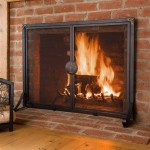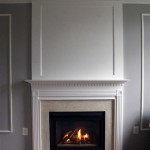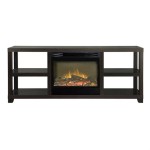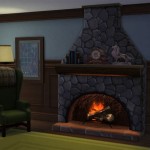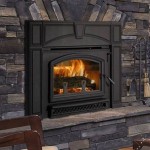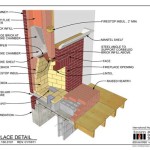Standalone Gas Fireplaces: A Comprehensive Overview
Standalone gas fireplaces, also known as freestanding gas fireplaces, offer a versatile and convenient heating solution for residential and commercial spaces. Unlike traditional fireplaces that are built into a wall or chimney structure, standalone units are self-contained, requiring only a gas connection and venting. This flexibility makes them suitable for a wide range of applications, from providing supplemental heat in living rooms to creating a focal point in bedrooms or offices. These appliances offer the aesthetic appeal of a fireplace with the ease of gas fuel and are available in various styles and sizes, ensuring compatibility with diverse décor preferences.
The appeal of standalone gas fireplaces stems from their ease of installation, efficient heating capabilities, and lower maintenance requirements compared to wood-burning alternatives. They offer a clean-burning fuel source, eliminating the need for wood storage and the associated mess. Furthermore, many modern units incorporate advanced features such as remote control operation, thermostatic control, and safety shut-off systems, enhancing convenience and peace of mind. Safety standards are rigorous, with manufacturers adhering to strict regulations regarding venting, gas connections, and overall appliance performance.
Key Considerations Before Purchase
Prior to purchasing a standalone gas fireplace, it is crucial to assess several key factors to ensure optimal performance and safety. The size of the room where the fireplace will be located is paramount. Selecting a unit that is too large for the space can lead to overheating, while a unit that is too small may not provide adequate heating. Manufacturers typically provide BTU (British Thermal Unit) ratings, which indicate the amount of heat the fireplace can generate. These ratings should be carefully considered in relation to the square footage of the room.
Venting requirements are a critical aspect of installation. Direct vent fireplaces are the most common type for standalone units. They draw combustion air from outside and vent exhaust gases directly outdoors through a sealed system, eliminating the need for a traditional chimney. Ventless gas fireplaces, while offering greater installation flexibility, are subject to stricter regulations and may not be permitted in all jurisdictions. They use room air for combustion and release exhaust gases directly into the living space. The potential impact on indoor air quality must be carefully considered when evaluating ventless options. Carbon monoxide detectors should always be installed and maintained when using any unvented appliance.
Budget is another important consideration. Standalone gas fireplaces range in price depending on factors such as size, features, and style. Installation costs, including gas line connections and venting, should also be factored into the overall budget. Obtaining quotes from qualified installers is recommended to ensure accurate cost estimates and compliance with local building codes.
Types of Standalone Gas Fireplaces
Standalone gas fireplaces are available in a variety of styles to suit different aesthetic preferences and functional needs. These include traditional, contemporary, and modern designs, each offering a unique visual appeal. Traditional units often feature realistic log sets and detailed mantels, replicating the look of a wood-burning fireplace. Contemporary designs tend to incorporate clean lines, minimalist aesthetics, and alternative media such as glass beads or decorative stones. Modern units may feature bold colors, geometric shapes, and innovative flame patterns.
In terms of ignition systems, standalone gas fireplaces typically utilize either electronic ignition or standing pilot ignition. Electronic ignition systems use an electronic spark to ignite the gas, eliminating the need for a constantly burning pilot light. This can result in energy savings, as the pilot light consumes gas even when the fireplace is not in use. Standing pilot ignition systems maintain a small, continuously burning flame that ignites the main burner when heat is desired. While less energy efficient, they offer a more reliable ignition source, particularly in areas prone to power outages.
The choice of fuel type is also a factor. While most standalone gas fireplaces use natural gas, propane models are also available. Natural gas is typically supplied through a municipal pipeline, while propane is stored in a tank on the property. The availability and cost of each fuel type should be considered when selecting a fireplace.
Installation and Maintenance
Proper installation is paramount to ensure the safe and efficient operation of a standalone gas fireplace. It is strongly recommended to engage a qualified and licensed gas fitter or HVAC technician to handle the installation process. This includes connecting the gas line, installing the venting system, and testing the appliance to ensure it is functioning correctly. Failure to adhere to proper installation procedures can result in gas leaks, carbon monoxide poisoning, or other safety hazards.
Regular maintenance is also essential to prolong the life of the fireplace and maintain optimal performance. This includes cleaning the glass front panel to remove soot and debris, inspecting the burner and gas valve for any signs of damage or wear, and checking the venting system for obstructions. A yearly inspection by a qualified technician is recommended to ensure that all components are functioning correctly and that there are no potential safety issues.
For ventless gas fireplaces, ensuring adequate ventilation in the room is particularly important. Opening a window or door can help to prevent the build-up of carbon monoxide and other pollutants. Carbon monoxide detectors should be installed and tested regularly to provide an early warning in the event of a malfunction. Following the manufacturer's instructions for cleaning and maintenance is crucial to ensure the safe and efficient operation of the appliance.
By carefully considering the factors outlined above, homeowners and businesses can select and install a standalone gas fireplace that provides warmth, ambiance, and lasting value.

Freestanding Gas Fireplaces Fergus Fireplace

Freestanding Gas Fireplaces Fergus Fireplace

Enviro S Series Freestanding Gas Or Propane Fireplace Fireplaces By Cameron

Enviro S Gas S50 Stove
Dru Freestanding Gas Fires And Stoves

Escea Dfs730 Freestanding Gas Fireplace Climatise

Want To Switch A Freestanding Gas Fireplace Jetmaster Vic

50 Free Standing Ventless Gas Fireplace Visualhunt

Free Standing Gas Fireplace Stoves For 30 On Now

Gas Stove Fireplaces Elegant And High Quality Rais
Related Posts


